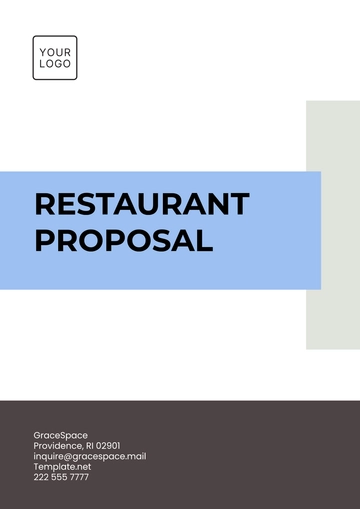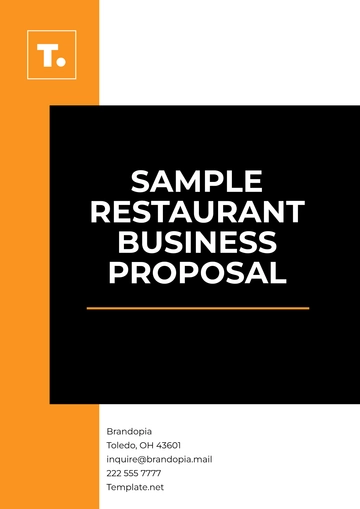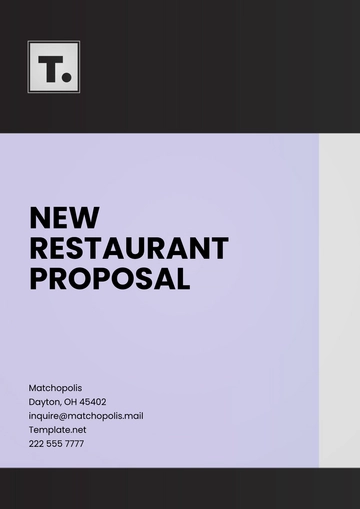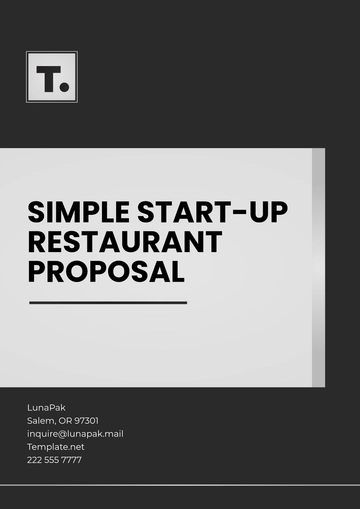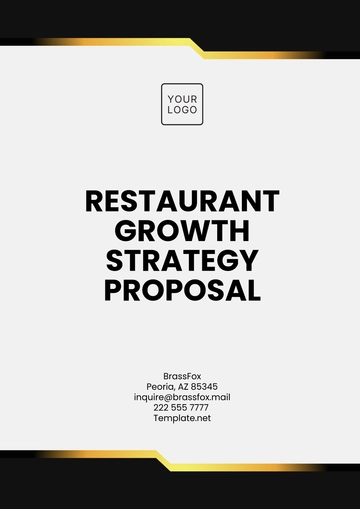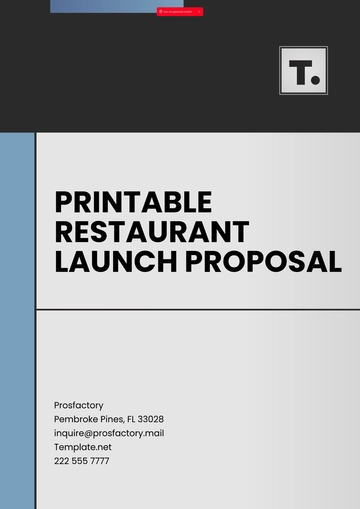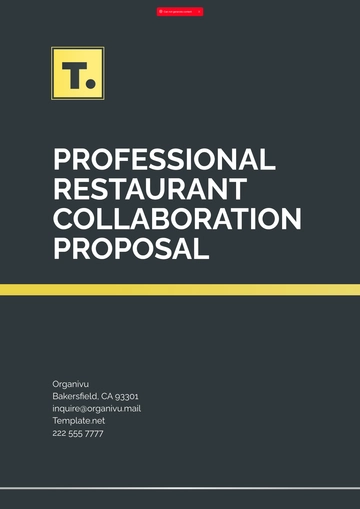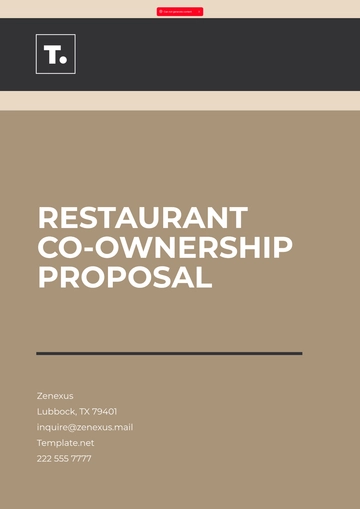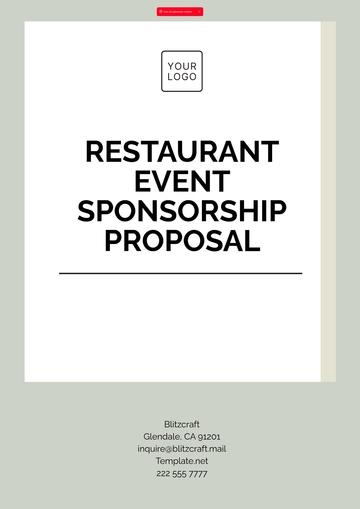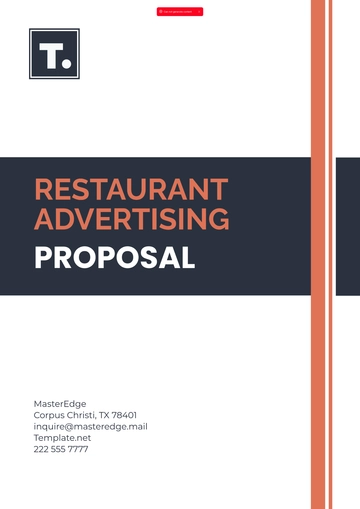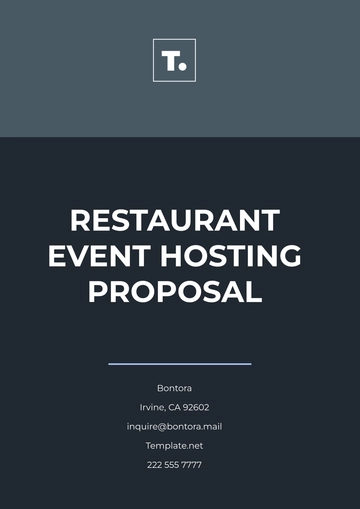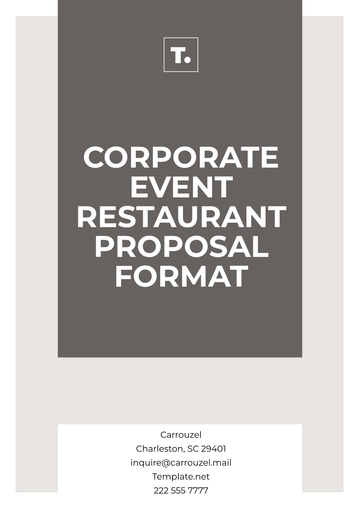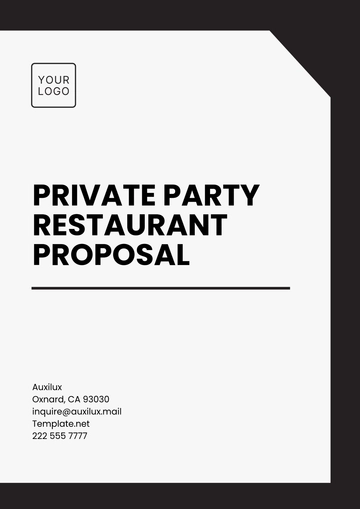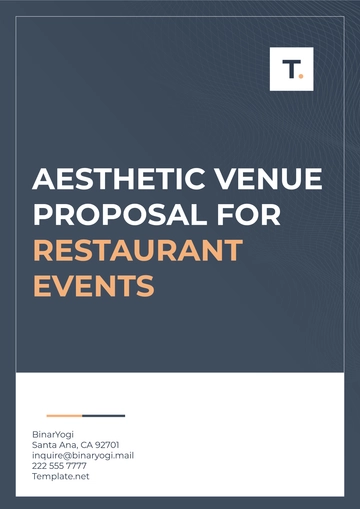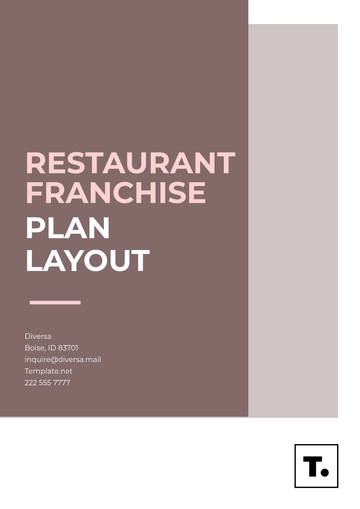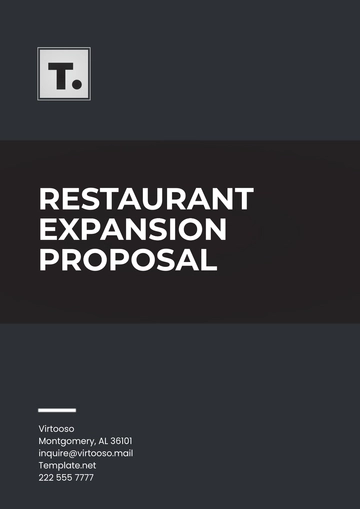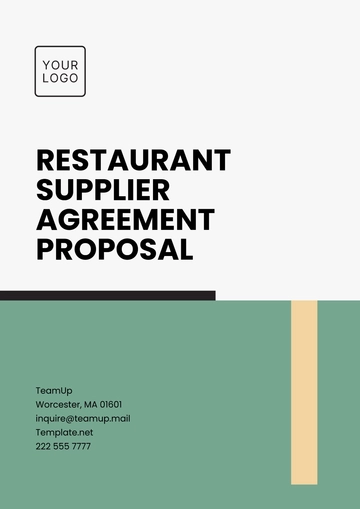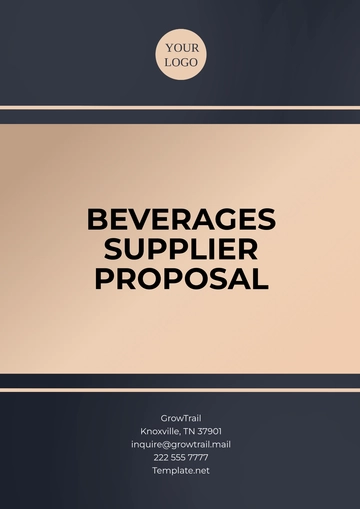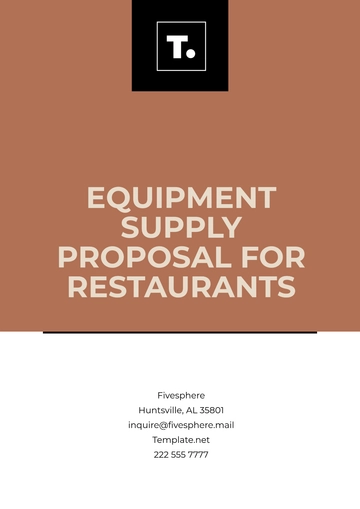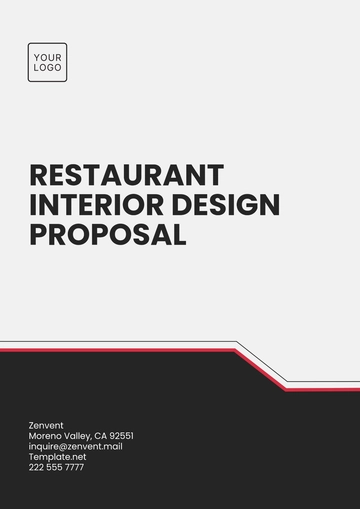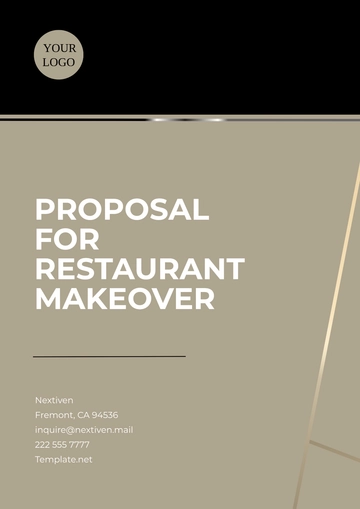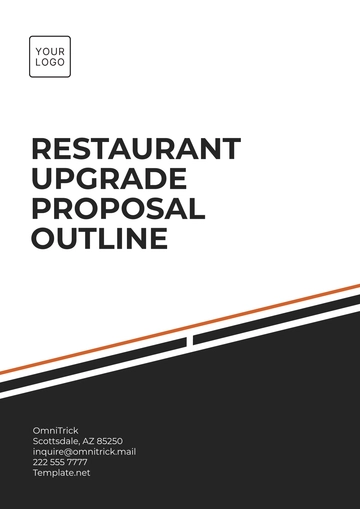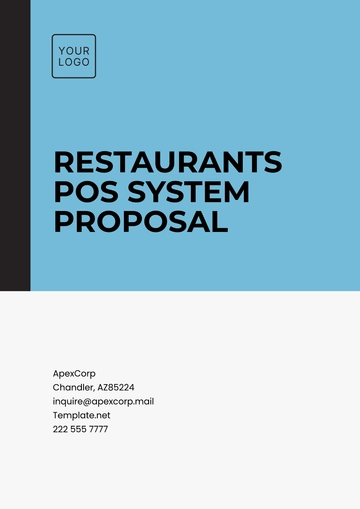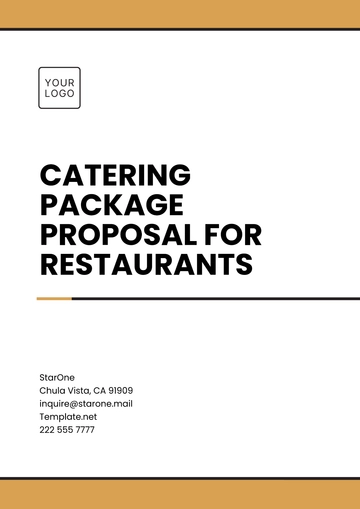Free Cafe Financial Proposal
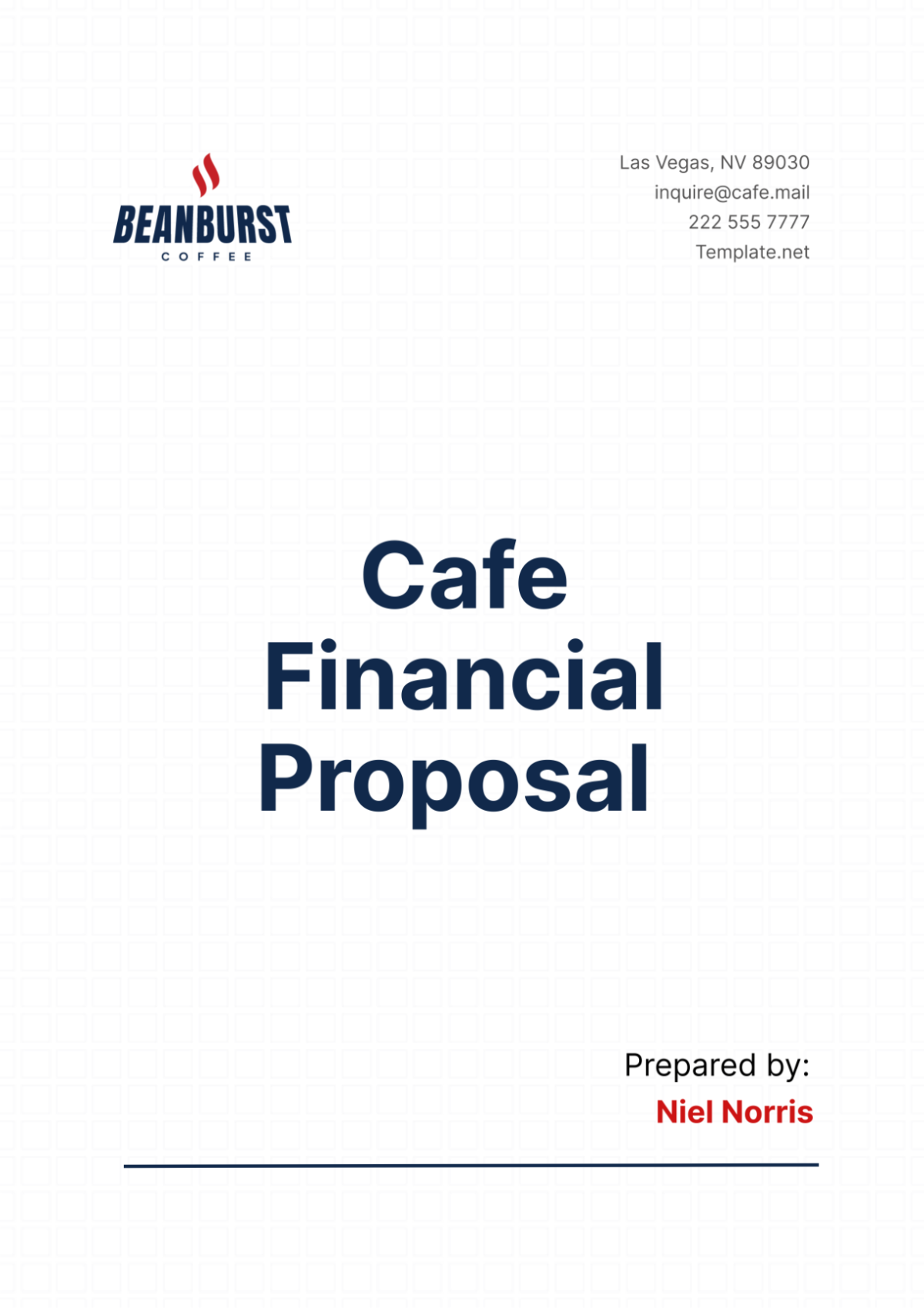
I. Executive Summary
A. Overview of the Cafe
[Your Company Name] is an innovative cafe concept aimed at providing a unique blend of quality coffee, delicious pastries, and a comfortable ambiance that caters to both casual visitors and remote workers. Located in a bustling urban area, our cafe is designed to be a haven for coffee lovers, food enthusiasts, and professionals seeking a conducive environment for work and meetings.
B. Purpose of the Financial Proposal
The primary purpose of this financial proposal is to outline the financial strategy and requirements necessary for the successful launch and operation of [Your Company Name]. This document aims to secure the necessary funding and to provide potential investors with a comprehensive understanding of our financial planning, revenue models and projected profitability.
C. Key Financial Highlights
Our cafe is projected to generate significant revenue growth within the first three years of operation. With a solid business plan and strategic market positioning, [Your Company Name] aims to achieve a break-even point within the first 18 months. The detailed financial projections included in this proposal highlight a steady increase in both revenue and profitability, driven by our diversified revenue streams and efficient cost management.
II. Business Description
A. Cafe Concept and Vision
[Your Company Name] is envisioned as more than just a cafe; it is a community hub where people can connect, relax, and be productive. Our vision is to create a welcoming atmosphere that combines the charm of a traditional cafe with modern amenities, making it an ideal spot for social gatherings, business meetings, and solo work sessions. We prioritize quality in everything we offer, from our artisanal coffee and freshly baked goods to our customer service and overall cafe experience.
B. Target Market and Customer Demographics
Our target market consists of urban dwellers, office workers, students, and tourists. We cater to a diverse demographic that includes young professionals aged 25-40, who appreciate a good cup of coffee and a pleasant environment to work or socialize. Additionally, our cafe attracts students from nearby universities and colleges, looking for a quiet place to study or meet with classmates. Tourists visiting the area also form a significant portion of our customer base, drawn by our cafe’s reputation for excellent coffee and a cozy atmosphere.
C. Unique Selling Proposition (USP)
What sets [Your Company Name] apart from other cafes is our commitment to quality and community. Our USP includes:
Artisanal Coffee: Sourced from the best coffee-growing regions, roasted to perfection, and brewed by skilled baristas.
Freshly Baked Goods: A daily selection of pastries and bread, made in-house using high-quality ingredients.
Ambiance: A thoughtfully designed space that blends comfort and functionality, with ample seating, free Wi-Fi, and a relaxed atmosphere.
Community Engagement: Regular events and workshops to engage with our customers and create a sense of community.
III. Market Analysis
A. Industry Overview
The cafe industry has seen steady growth over the past decade, driven by a rising demand for specialty coffee and a growing culture of cafe-going. According to industry reports, the global coffee market is expected to continue expanding, with consumers increasingly seeking out high-quality, ethically sourced coffee. In addition, the trend towards remote work and flexible office spaces has boosted the popularity of cafes as alternative workspaces.
B. Market Trends
Several key trends are shaping the cafe industry:
Specialty Coffee: Consumers are becoming more knowledgeable about coffee and are willing to pay a premium for specialty brews.
Health and Wellness: There is a growing demand for healthier food and beverage options, including plant-based and gluten-free choices.
Sustainability: Eco-friendly practices, such as using recyclable packaging and supporting fair trade, are becoming important to consumers.
Technology Integration: Cafes are adopting technology to enhance the customer experience, including mobile ordering, contactless payments, and free Wi-Fi.
C. Competitive Landscape
The competitive landscape for cafes in urban areas is intense, with numerous established chains and independent coffee shops vying for market share. Key competitors include both large brands like Starbucks and local favorites that have built a loyal customer base. To differentiate itself, [Your Company Name] focuses on quality, customer experience, and community engagement.
D. SWOT Analysis
A SWOT analysis helps to identify the strengths, weaknesses, opportunities, and threats associated with [Your Company Name]:
Strengths | Weaknesses |
|---|---|
High-quality coffee and pastries | High initial startup costs |
Prime urban location | Dependency on local market conditions |
Strong community engagement | Limited brand recognition initially |
Experienced management team | Seasonality affecting foot traffic |
Opportunities | Threats |
|---|---|
Expansion to additional locations | Intense competition from established brands |
Introducing new product lines | Economic downturns impacting consumer spending |
Partnerships with local businesses | Fluctuating costs of raw materials |
IV. Financial Objectives
A. Short-term Financial Goals
In the first year of operation, [Your Company Name] aims to establish a strong market presence and achieve a solid financial foundation. Our primary short-term goals include:
Generating a consistent monthly revenue stream that covers all operating expenses.
Achieving a customer satisfaction rate of 90% or higher through excellent service and quality products.
Building a loyal customer base with a retention rate of at least 60%.
B. Long-term Financial Goals
Over the next three to five years, our long-term financial goals focus on growth and profitability. These goals include:
Expanding to two additional locations in strategically chosen urban areas.
Increasing annual revenue by 20% year-over-year.
Achieving a net profit margin of at least 15% by the end of the third year.
Diversifying revenue streams by introducing new product lines and services, such as catering and merchandise sales.
C. Key Performance Indicators (KPIs)
To measure our progress towards these financial goals, we will track the following KPIs:
Monthly Revenue: Monitoring sales performance to ensure consistent growth.
Customer Retention Rate: Assessing the percentage of returning customers.
Profit Margin: Evaluating the net profit as a percentage of total revenue.
Cost of Goods Sold (COGS): Analyzing the costs associated with producing our coffee and pastries to maintain efficiency.
Customer Satisfaction Scores: Gathering feedback through surveys to ensure high levels of customer satisfaction.
V. Revenue Model
A. Revenue Streams
[Your Company Name] has identified several key revenue streams to ensure a diversified income:
Food and Beverage Sales: The primary source of revenue, driven by sales of coffee, tea, pastries, sandwiches, and other menu items. We anticipate an average spend of $8 per customer.
Special Events and Catering: Hosting private events, such as business meetings, book clubs, and social gatherings, as well as providing catering services for local businesses and events.
Merchandise Sales: Selling branded merchandise, such as mugs, coffee beans, and apparel, which not only generates additional revenue but also promotes our brand.
B. Pricing Strategy
Our pricing strategy is designed to reflect the quality of our offerings while remaining competitive within the market. We employ a value-based pricing approach, setting prices that customers perceive as fair for the quality and experience provided. For instance, our specialty coffee beverages are priced between $3 and $5, while pastries range from $2 to $4. This strategy ensures we cover our costs and achieve desired profit margins without deterring price-sensitive customers.
C. Sales Forecast
Our sales forecast is based on detailed market research and analysis of comparable cafes in the area. We project a steady increase in sales over the first three years, with conservative estimates to account for market fluctuations. Below is a summary of our sales forecast:
Year | Projected Revenue | Cost of Goods Sold (COGS) | Gross Profit |
|---|---|---|---|
Year 1 | $300,000 | $120,000 | $180,000 |
Year 2 | $360,000 | $144,000 | $216,000 |
Year 3 | $432,000 | $172,800 | $259,200 |
This forecast is based on an estimated 100 daily customers in the first year, growing to 120 and 144 daily customers in the second and third years, respectively. Average customer spending and COGS have been factored into these projections to ensure realistic and achievable targets.
VI. Cost Structure
A. Startup Costs
[Your Company Name] will incur several startup costs to establish the cafe. These include:
Location and Leasehold Improvements: $50,000 for a prime urban location with necessary renovations and improvements to create a welcoming atmosphere.
Equipment and Furniture: $30,000 for commercial-grade coffee machines, kitchen equipment, tables, chairs, and decor.
Initial Inventory and Supplies: $10,000 for the purchase of initial food and beverage inventory, packaging materials, and cleaning supplies.
B. Operating Costs
To ensure smooth operations, [Your Company Name] will incur the following ongoing operating costs:
Rent and Utilities: $4,000 per month for rent, electricity, water, and other utilities.
Staff Salaries and Benefits: $6,000 per month for a team of baristas, kitchen staff, and support personnel.
Marketing and Advertising: $2,000 per month for local marketing efforts, including social media, print ads, and promotions.
Miscellaneous Expenses: $1,000 per month for insurance, licenses, permits, and other miscellaneous costs.
VII. Funding Requirements
A. Total Funding Needed
Based on the startup and operating costs outlined above, [Your Company Name] requires a total funding of $150,000 to launch and sustain operations for the first six months.
B. Use of Funds
The funds will be allocated as follows:
Startup Costs: $90,000 to cover location, leasehold improvements, equipment, and initial inventory.
Operating Costs: $60,000 to cover rent, utilities, salaries, marketing, and miscellaneous expenses for the first six months.
C. Funding Sources
[Your Company Name] plans to secure funding from the following sources:
Personal Investment: $50,000 from the founders' personal savings.
Loans and Financing: $75,000 from a combination of bank loans and small business grants.
Investors and Equity: $25,000 from angel investors or venture capitalists in exchange for an equity stake in the company.
VIII. Financial Projections
A. Profit and Loss Statement
The projected profit and loss statement for [Your Company Name] is as follows:
Year | Total Revenue | Total Expenses | Net Profit |
|---|---|---|---|
Year 1 | $300,000 | $240,000 | $60,000 |
Year 2 | $360,000 | $280,000 | $80,000 |
Year 3 | $432,000 | $320,000 | $112,000 |
B. Balance Sheet
The projected balance sheet for [Your Company Name] is as follows:
Assets | Liabilities and Equity |
|---|---|
Cash: $50,000 | Loans Payable: $75,000 |
Inventory: $5,000 | Equity: $75,000 |
Equipment: $30,000 | |
Total Assets: $85,000 | Total Liabilities and Equity: $150,000 |
C. Break-even Analysis
Based on our projected sales and expenses, [Your Company Name] is expected to reach a break-even point in the first 18 months of operation. This means that after 18 months, the cafe will start generating profits.
IX. Risk Analysis and Mitigation
A. Potential Financial Risks
Market Fluctuations: Changes in consumer preferences or economic conditions could impact sales and profitability.
Competition: Intense competition from established cafes could affect our market share and pricing strategy.
Cost Overruns: Unexpected expenses during startup or operational phases could strain finances.
Regulatory Changes: Changes in regulations related to food safety, labor laws, or taxes could increase operating costs.
B. Risk Mitigation Strategies
Diversification: Offering a variety of products and services to appeal to a broader customer base.
Financial Planning: Creating a detailed budget and monitoring expenses closely to avoid cost overruns.
Marketing and Branding: Building a strong brand and marketing strategy to differentiate [Your Company Name] from competitors.
Adaptability: Staying abreast of market trends and being willing to adapt our offerings and strategies as needed.
C. Contingency Plans
Emergency Fund: Maintaining a reserve fund to cover unexpected expenses or revenue shortfalls.
Partnerships and Collaborations: Exploring partnerships with local businesses or events to increase revenue streams.
Flexible Operations: Being prepared to adjust operating hours or offerings in response to changing market conditions.
- 100% Customizable, free editor
- Access 1 Million+ Templates, photo’s & graphics
- Download or share as a template
- Click and replace photos, graphics, text, backgrounds
- Resize, crop, AI write & more
- Access advanced editor
Plan finances effectively with Template.net's Cafe Financial Proposal Template. This customizable and editable template, accessible via the Ai Editor Tool, helps you draft detailed financial proposals. Personalize it to include specific financial goals and plans. Ensure clear and organized documentation for financial planning in your cafe.
You may also like
- Business Proposal
- Research Proposal
- Proposal Request
- Project Proposal
- Grant Proposal
- Photography Proposal
- Job Proposal
- Budget Proposal
- Marketing Proposal
- Branding Proposal
- Advertising Proposal
- Sales Proposal
- Startup Proposal
- Event Proposal
- Creative Proposal
- Restaurant Proposal
- Blank Proposal
- One Page Proposal
- Proposal Report
- IT Proposal
- Non Profit Proposal
- Training Proposal
- Construction Proposal
- School Proposal
- Cleaning Proposal
- Contract Proposal
- HR Proposal
- Travel Agency Proposal
- Small Business Proposal
- Investment Proposal
- Bid Proposal
- Retail Business Proposal
- Sponsorship Proposal
- Academic Proposal
- Partnership Proposal
- Work Proposal
- Agency Proposal
- University Proposal
- Accounting Proposal
- Real Estate Proposal
- Hotel Proposal
- Product Proposal
- Advertising Agency Proposal
- Development Proposal
- Loan Proposal
- Website Proposal
- Nursing Home Proposal
- Financial Proposal
- Salon Proposal
- Freelancer Proposal
- Funding Proposal
- Work from Home Proposal
- Company Proposal
- Consulting Proposal
- Educational Proposal
- Construction Bid Proposal
- Interior Design Proposal
- New Product Proposal
- Sports Proposal
- Corporate Proposal
- Food Proposal
- Property Proposal
- Maintenance Proposal
- Purchase Proposal
- Rental Proposal
- Recruitment Proposal
- Social Media Proposal
- Travel Proposal
- Trip Proposal
- Software Proposal
- Conference Proposal
- Graphic Design Proposal
- Law Firm Proposal
- Medical Proposal
- Music Proposal
- Pricing Proposal
- SEO Proposal
- Strategy Proposal
- Technical Proposal
- Coaching Proposal
- Ecommerce Proposal
- Fundraising Proposal
- Landscaping Proposal
- Charity Proposal
- Contractor Proposal
- Exhibition Proposal
- Art Proposal
- Mobile Proposal
- Equipment Proposal
- Student Proposal
- Engineering Proposal
- Business Proposal
